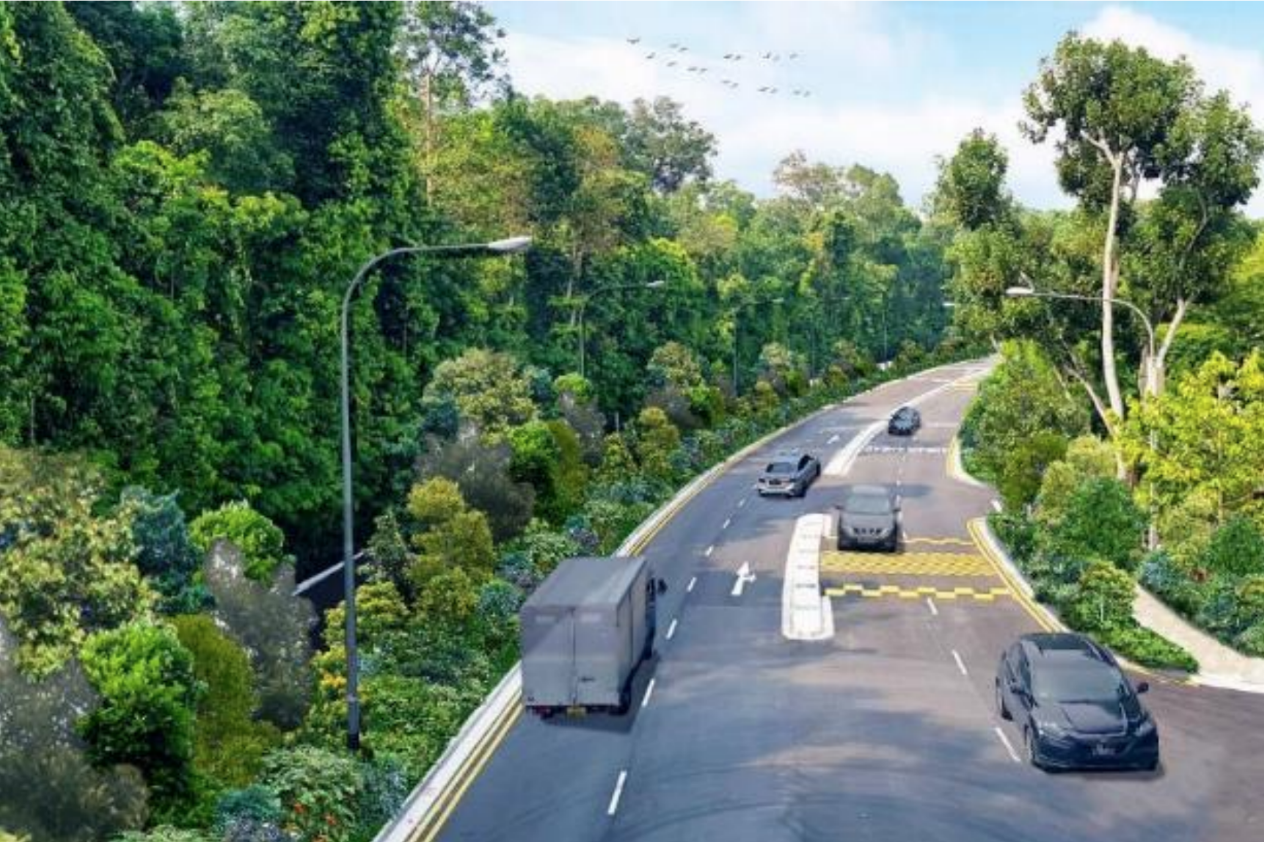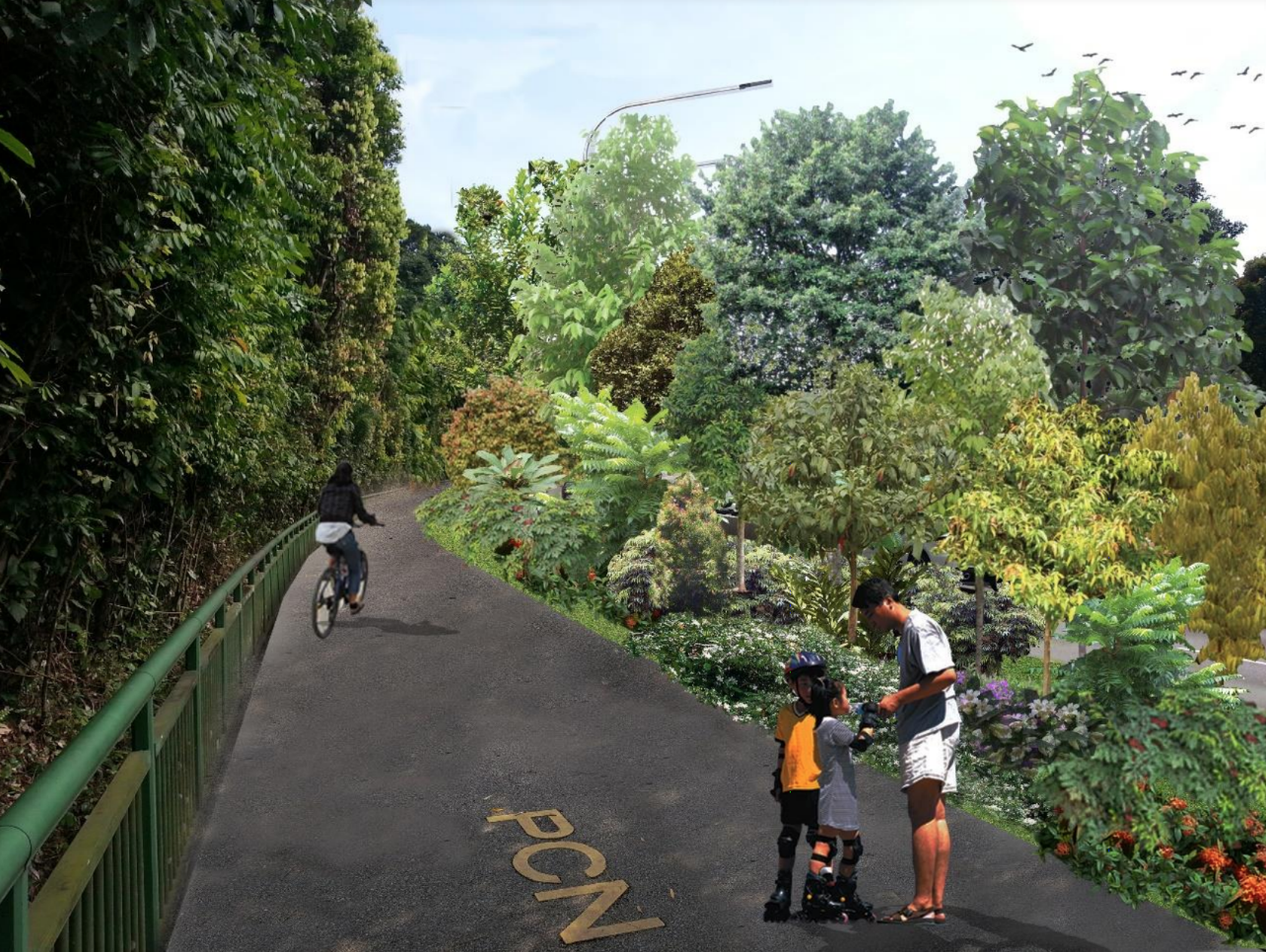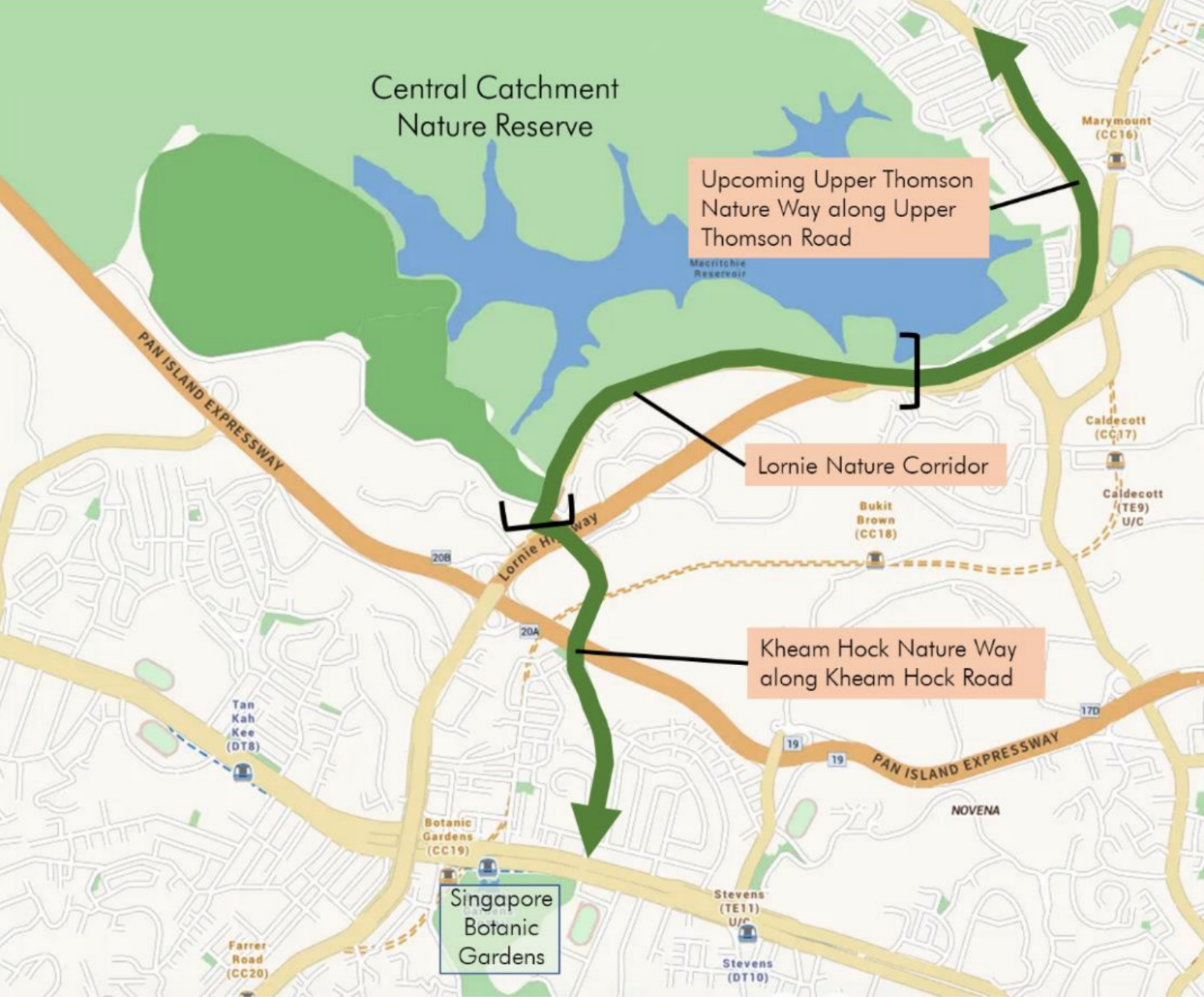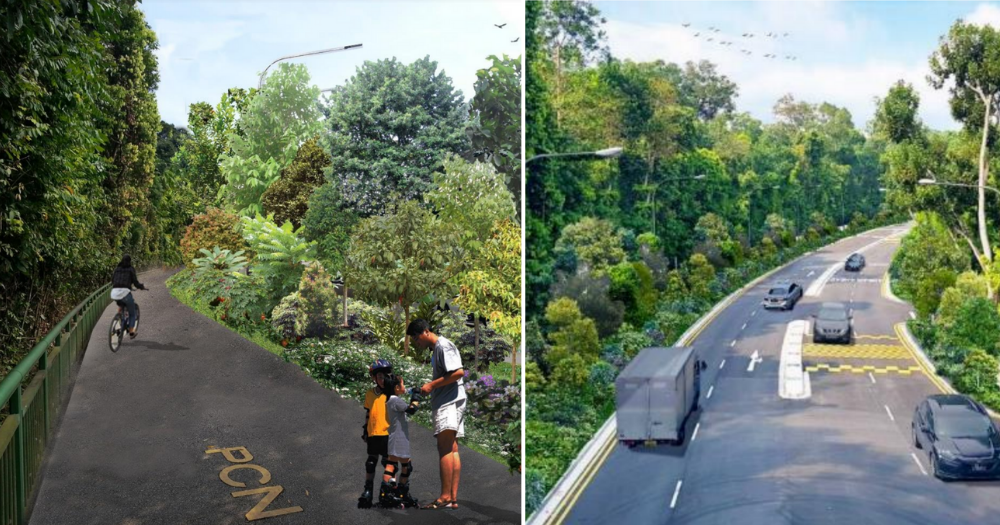The Lornie Nature Corridor has officially been launched on Nov. 21 by Desmond Lee, Minister for National Development and Minister in-charge-of Social Services Integration.
Acts as buffer for CCNR
The 1.76km stretch along Lornie Road comprises a Nature Way and a Park Connector, the latter of which is part of the 36km Coast-to-Coast Trail.
It is adjacent to the Central Catchment Nature Reserve (CCNR), acting as a natural buffer which helps to bolster the habitats of biodiversity like the Raffles' Banded Langur and Sunda pangolin in those areas.
This buffer also helps reduce forest fragmentation of the nature reserve, making it more resilient to the impacts of climate change and extreme weather.
The corridor is planted with over 100 species of trees and shrubs, mimicking a more natural landscape like a rainforest. The greenery also creates a cooler and more comfortable environment for users.
Once the plants mature, the route will resemble a forested corridor, providing for a rustic environment for hikers and cyclists to move between MacRitchie Reservoir Park and Adam Rd.
 Artist's impression of Lornie Nature Corridor with more mature vegetation. Photo from NParks
Artist's impression of Lornie Nature Corridor with more mature vegetation. Photo from NParks
 Artist's impression of Park Connector within Lornie Nature Corridor with more mature vegetation. Photo from NParks
Artist's impression of Park Connector within Lornie Nature Corridor with more mature vegetation. Photo from NParks
Having more natural landscapes through rewilding
Lornie Nature Corridor is also part of a longer 10km stretch starting from Kheam Hock Rd, connecting to Lornie Rd and Upper Thomson Rd, ultimately linking together the CCNR and the Singapore Botanic Gardens.
 Photo from NParks
Photo from NParks
This 10km stretch will undergo rewilding, which involves planting a curated mix of native trees, shrubs, and wildflowers to introduce more naturalistic landscapes across Singapore.
Not only will biodiversity benefit from this ecological connectivity, the lusher greenery can be enjoyed by the public.
Under the Rewilding Plan, these selected sites are allowed to grow naturally "with selective intervention".
These interventions include pruning, which will occasionally be carried out for public and road safety, and regular pruning and weeding will only occur in residential areas.
Certain species more at risk of catching fire during the dry weather will also be removed.
The Plan was affirmed by Singaporeans' positive reactions to the taller grass and wildflowers that grew along grass verges during the circuit breaker, when less grass-cutting was carried out.
The Rewilding Plan will be rolled out progressively at 32 stretches of Nature Ways, road verges and other habitat areas within green spaces and parks, over the next three years.
Aside from Lornie Nature Corridor, other sites for rewilding include areas along Ang Mo Kio Ave 1, Kheam Hock Rd, Old Chua Chu Kang Rd, Upper Thomson Rd, as well as in parks like Bedok Reservoir Park and Bishan Ang Mo Kio Park.
Created after reclaiming old Lornie Rd
Lornie Nature Corridor was created after the reclamation of the old Lornie Rd, scaling it down from seven lanes to two lanes.
This was aided by the opening of Lornie Highway.
The space freed up from these changes was thus converted to the nature corridor.
Speaking at the launch, Lee said that the construction of Lornie Highway was what affected part of the Bukit Brown Cemetery, which caused conservation groups to rally together and voice their concerns.
However, Lee said it was very difficult issues like these that "opened up conversations, and allowed us to deepen the partnership between the Government and civil society such as nature and heritage groups."
As part of the One Million Trees Movement, Lee, alongside Speaker Tan Chuan-Jin, other volunteers and members of nature groups, will also be planting 150 trees along Lornie Nature Corridor today.
https://fb.watch/1UncB9OyeH/
https://fb.watch/1UngsRYIeP/
Totally unrelated but follow and listen to our podcast here
Top photo from NParks
If you like what you read, follow us on Facebook, Instagram, Twitter and Telegram to get the latest updates.
